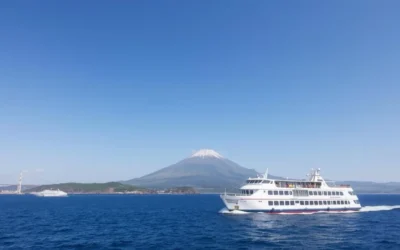✓ Accommodations✓ Flights✓ Rental Cars
To truly immerse yourself in Shimane’s unique culture and breathtaking scenery, understanding the prefecture’s seasonal rhythms is crucial. Shimane Prefecture, located on Japan’s mainland, is a treasure trove of cultural heritage and natural beauty, making it a must-visit destination for any traveler.
The timing of your visit can significantly impact your experience, as Shimane’s distinct seasons offer a variety of landscapes and activities. From the blooming cherry blossoms in the spring to the vibrant autumn foliage, each season brings its own charm and attractions.
Understanding the weather variations throughout the year will not only help you pack appropriately but also maximize your sightseeing opportunities. Whether you’re seeking cultural immersion, outdoor adventures, or tranquil experiences, Shimane has something to offer in every season.
This comprehensive guide will walk you through Shimane’s climate patterns, seasonal highlights, and practical travel tips to ensure your trip is perfectly timed for an unforgettable experience. By the end of this guide, you’ll be well-equipped to plan your visit during the best months for a weather-savvy trip.
Understanding Shimane Prefecture’s Unique Geography and Climate
With its diverse terrain and maritime influence, Shimane Prefecture experiences a temperate climate with four distinct seasons. This unique blend of geography and climate makes Shimane a fascinating destination for travelers.
Location and Geographical Features
Shimane Prefecture is situated on the southwestern coast of Honshu island, facing the Sea of Japan. This location creates a unique climate influenced by both maritime and mountain weather patterns. The geographical landscape of Shimane features diverse terrain, including coastal areas, mountains, and valleys, contributing to localized weather variations throughout the prefecture.
The mountainous regions, particularly in the eastern parts, can experience different weather conditions than the coastal areas in the same time of year. Understanding these geographical features is essential for planning your trip, as the terrain affects accessibility to certain attractions during different seasons.
| Geographical Feature | Climate Influence |
|---|---|
| Coastal Areas | Moderated temperatures throughout the year |
| Mountainous Regions | Heavy snowfall in winter, varied weather conditions |
| Valleys | Localized weather variations |
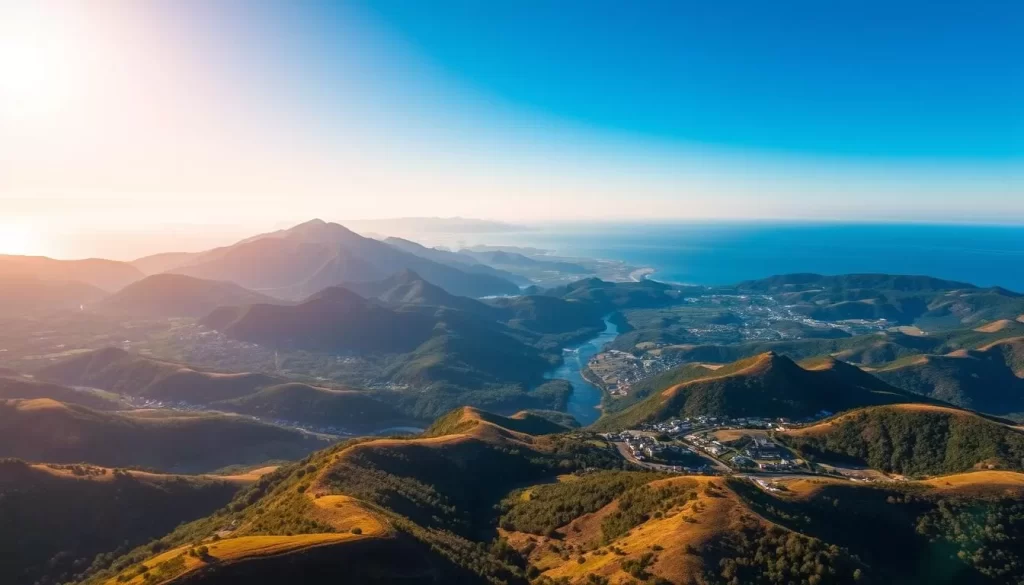
Overview of Shimane’s Four Distinct Seasons
Shimane experiences four distinct seasons, each offering a different perspective on the area’s natural beauty and cultural attractions. The time of year you visit can significantly impact your experience, with each season presenting unique opportunities to explore this beautiful place.
The area‘s nature is particularly vibrant during spring and autumn, while summer offers a range of outdoor activities, and winter provides a serene landscape and hot springs. Understanding the characteristics of each season will help you plan your trip to Shimane effectively.
Shimane Prefecture, Japan: Best Months for a Weather-Savvy Trip
To make the most of your trip to Shimane, it’s crucial to know when to go for the best weather and experiences. Shimane Prefecture offers a unique blend of natural beauty and cultural heritage, making it a fascinating destination throughout the year.
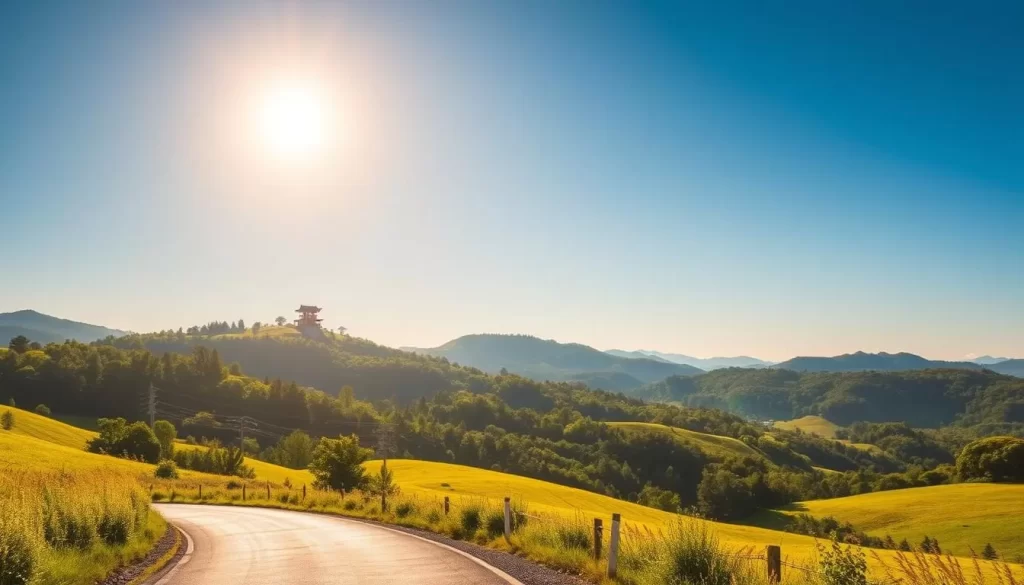
Spring (April-May): Cherry Blossoms and Mild Temperatures
Spring is a perfect time to visit Shimane, with cherry blossoms blooming across the prefecture. The mild temperatures, ranging from 50°F to 65°F (10°C to 18°C), make it ideal for sightseeing. Historic sites like Matsue Castle provide a stunning backdrop to the blossoms, creating an unforgettable experience.
Fall (October-November): Autumn Foliage and Pleasant Weather
Another ideal time to visit Shimane is in the fall, when the autumn foliage transforms the landscape into a vibrant canvas of colors. The comfortable temperatures, between 50°F to 70°F (10°C to 21°C), make it a pleasant season for exploring the outdoors.
Avoiding Rainy Season and Typhoon Season
While Shimane can be visited year-round, it’s advisable to avoid the rainy season in June and July, and the typhoon season from September to early October. These periods can disrupt travel plans with heavy rainfall and strong winds, making spring and fall the best time to visit for a hassle-free trip.
Understanding the seasonal weather patterns helps in planning a more enjoyable and stress-free trip to Shimane. Whether you’re drawn to the beauty of cherry blossoms in spring or the autumn foliage, Shimane Prefecture is a destination that offers something unique in every season, making it a great place to visit at the right time.
Spring in Shimane: A Celebration of Cherry Blossoms
As spring arrives, Shimane Prefecture transforms into a breathtaking landscape of blooming cherry blossoms. This season is a great time to visit Shimane, with its many excellent spots to enjoy the blooms, including parks, gardens, and historic sites.
Cherry Blossom Viewing Spots in Shimane
Shimane offers numerous picturesque locations for cherry blossom viewing. The grounds of Matsue Castle are particularly noteworthy, featuring over 200 cherry trees that beautifully frame the historic black castle against the backdrop of Lake Shinji. Another must-visit is the Yuushien Garden on Daikon Island, which becomes a floral paradise in spring with its variety of blooming flowers, including plum, peach, and azalea, in addition to cherry blossoms.
The ancient shrine of Izumo Taisha also takes on a magical quality during spring, with its grounds adorned with blooming cherry trees, offering a spiritual dimension to your cherry blossom viewing experience.
Spring Festivals and Cultural Events
Spring in Shimane is not just about cherry blossoms; it’s also a time for festivals and cultural events. The Matsue Castle Cherry Blossom Festival is a highlight, featuring illuminated nighttime viewing, traditional performances, and food stalls. Local communities throughout Shimane host hanami (flower viewing) parties during peak bloom, providing a wonderful opportunity to experience Japanese culture and mingle with locals under the blossoming trees.
Additionally, spring is a time when many traditional cultural events take place, including tea ceremonies, traditional music performances, and special exhibitions at museums and cultural centers across Shimane, enriching your visit with the region’s rich cultural heritage.
Summer in Shimane: Navigating the Heat and Rain
When you visit Shimane in the summer, you’ll encounter a mix of hot weather, rain, and exciting festivals. Summer, which spans from June to August, is characterized by high humidity and temperatures often reaching 85°F (29°C). The season brings both challenges and opportunities for unique experiences.
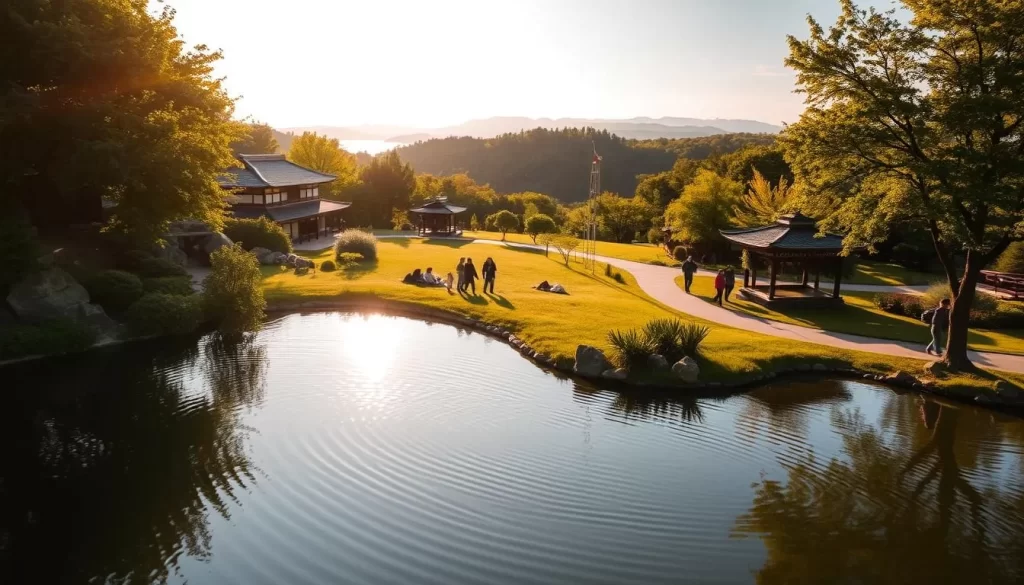
Managing the Rainy Season
The rainy season, which occurs from June to July, is marked by frequent downpours and high humidity. To make the most of your trip, it’s essential to pack appropriate rain gear and plan a flexible itinerary. Despite the rain, the landscape transforms into a lush, green scenery, and the misty views around mountains and temples create a mystical atmosphere.
Summer Festivals and Indoor Attractions
Summer in Shimane is not just about the weather; it’s also a time for vibrant festivals. The Matsue Water Lantern Festival in August is a highlight, where thousands of lanterns float on Lake Shinji, creating a magical nighttime spectacle. On hot summer days, indoor attractions like the Adachi Museum of Art and the Shimane Museum of Ancient Izumo offer air-conditioned refuges. The Adachi Museum is particularly famous for its beautifully maintained Japanese garden, viewable from inside.
Coastal Escapes and Water Activities
The coastal areas of Shimane, especially around the Oki Islands, become popular escapes during the summer. You can enjoy swimming, snorkeling, and boat tours, taking advantage of the refreshing sea breezes. After a day of exploring, hot springs in areas like Tamatsukuri Onsen provide a traditional way to relax, with many ryokans offering private baths with scenic views.
Autumn in Shimane: The Season of Colors and Culture
You can experience the magic of autumn in Shimane, where the season brings forth a mesmerizing palette of colors. As the summer heat dissipates, the region transforms into a haven for nature lovers and culture enthusiasts alike. The mild weather and spectacular fall colors make autumn an ideal time to visit Shimane.
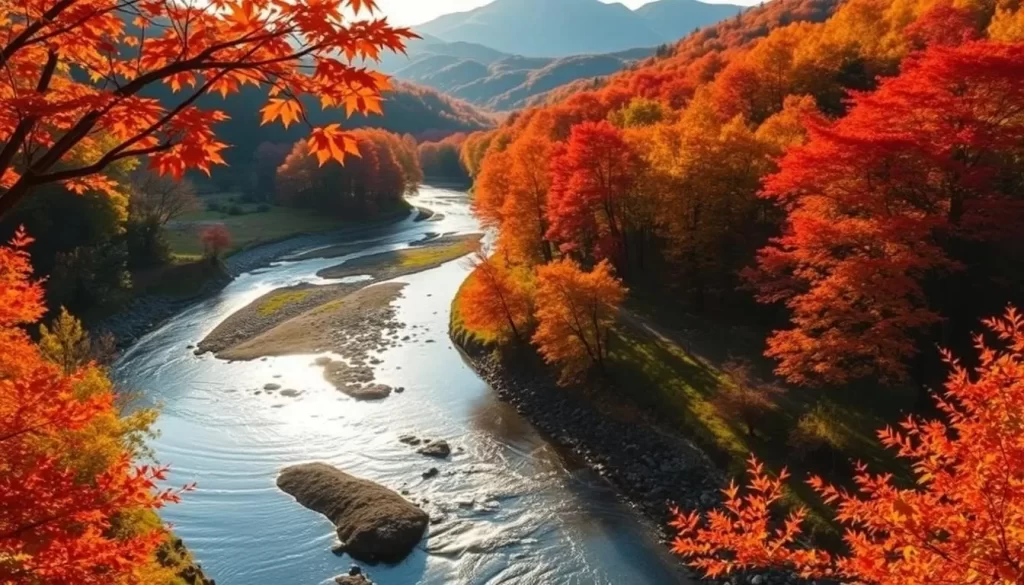
Best Spots for Autumn Foliage
Shimane Prefecture is home to numerous breathtaking spots for viewing autumn foliage. Gakuenji Temple in Izumo is renowned for its ancient maple trees that create a canopy of crimson against the historic temple buildings. The mountainous areas around Mt. Sanbe offer hiking trails that wind through forests ablaze with seasonal colors, providing both casual strolls and more challenging treks.
| Location | Best Time to Visit | Notable Features |
|---|---|---|
| Gakuenji Temple, Izumo | Mid-October to Late November | Ancient maple trees, historic temple buildings |
| Mt. Sanbe | Mid-October to Late November | Hiking trails, forests with seasonal colors |
Fall Harvest Festivals and Cultural Experiences
Autumn in Shimane is not just about the fall colors; it’s also a time for celebrating the harvest and experiencing the local culture. Fall harvest festivals take place throughout the region, featuring local specialties like Shimane’s famous buckwheat noodles, persimmons, and newly harvested rice. Visitors can also witness the Iwami Kagura performances, traditional masked dance-dramas that reach their peak season in autumn.
The comfortable weather and stunning backdrop of fall colors make autumn the best time to visit cultural sites like Izumo Taisha, enhancing the spiritual atmosphere of these ancient places.
Winter in Shimane: Tranquil Beauty and Hot Springs
Winter in Shimane brings a unique charm, distinct from the bustling summer tourist season. The cold but relatively dry weather, with temperatures ranging from 25°F to 40°F, sets the stage for a serene winter experience.
Winter Weather Patterns and What to Expect
During the winter months (December to February), Shimane Prefecture experiences cold temperatures, typically between 30°F and 45°F (-1°C to 7°C). The coastal areas have milder winters compared to the mountainous regions, which may receive significant snowfall, creating picturesque landscapes.
| Region | Temperature Range | Notable Features |
|---|---|---|
| Coastal Areas | Milder | Less Snowfall |
| Mountainous Regions | Cold | Significant Snowfall, Picturesque Landscapes |
Hot Springs and Winter Comfort
Hot springs (onsen) are a highlight of winter travel in Shimane. Famous areas like Tamatsukuri Onsen and Yunotsu Onsen offer therapeutic mineral waters. Many traditional ryokans feature private hot spring baths with winter views, allowing visitors to experience Japanese bathing culture in a serene setting.
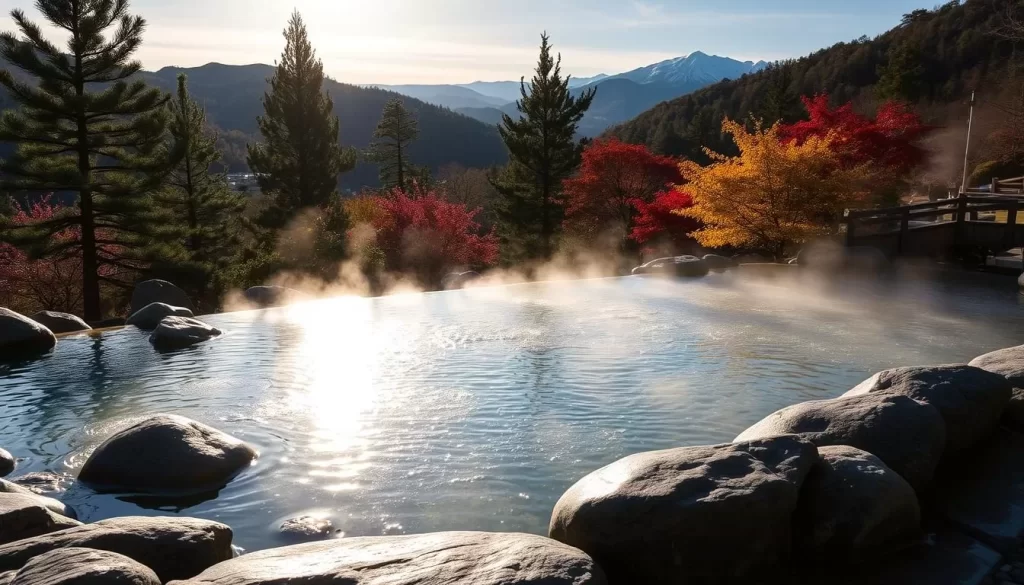
Winter Illuminations and Seasonal Events
Winter illumination events light up the darkness, with Matsue Castle and various gardens featuring spectacular light displays. Seasonal winter foods, including hearty hot pot dishes and fresh crab from the Sea of Japan, provide a culinary way to combat the winter chill.
The reduced number of travelers during winter means more authentic interactions with local people and a more relaxed pace when visiting popular attractions like Izumo Taisha.
Must-Visit Destinations in Shimane Throughout the Year
From ancient shrines to stunning natural landscapes, Shimane Prefecture offers a wide range of exciting places to explore at any time of the year. Whether you’re interested in history, culture, or outdoor activities, Shimane has something for everyone.
Izumo Taisha: Japan’s Ancient Shrine
Izumo Taisha is one of Japan’s most revered Shinto shrines, attracting visitors throughout the year with its unique architectural style and spiritual significance. The shrine is particularly famous for being the gathering place of deities during the tenth lunar month.
Matsue Castle and Lake Shinji
Matsue Castle, one of Japan’s few remaining original castles, offers breathtaking views of Lake Shinji from its top floor. The castle and lake area is a cultural and recreational hub, hosting various seasonal festivals and activities.
Iwami Ginzan Silver Mine: UNESCO World Heritage Site
The Iwami Ginzan Silver Mine is a fascinating glimpse into Japan’s industrial past, featuring well-preserved mining tunnels and historical villages. Visitors can explore the mine and its surroundings throughout the year.
Oki Islands: Natural Beauty Year-Round
The Oki Islands are known for their pristine beaches, dramatic cliffs, and unique geological formations. Summer is a particularly great time to visit, with warm weather ideal for outdoor activities like swimming and hiking.
Shimane Prefecture’s diverse attractions can be enjoyed throughout the year, with each season offering a unique experience. From the cherry blossoms of spring to the autumn foliage, and from the summer sun to the serene winter landscapes, there’s always something to discover in Shimane.
Practical Travel Tips for Your Shimane Adventure
As you prepare for your journey to Shimane, understanding the practical aspects of your trip can greatly enhance your experience. Whether you’re looking forward to spring cherry blossoms or fall foliage, being informed will help you make the most of your time in this beautiful prefecture.
Getting There and Getting Around
Shimane Prefecture is accessible via train, bus, or flight from major cities like Tokyo. Once you arrive, you’ll find that transportation options within Shimane include trains, buses, and rental cars. The JR San’in Line is a convenient way to travel between major cities and tourist areas, but renting a car is recommended for exploring rural areas.
- Use domestic flights to Izumo Airport for convenient access.
- Take advantage of the JR San’in Line for travel between major cities.
- Consider renting a car for rural explorations.
Accommodation for Every Season
From traditional ryokans with hot spring baths to modern hotels, Shimane offers a wide range of accommodation options. Prices are generally lower than in more tourist-heavy regions, especially during off-peak months. It’s essential to book in advance during spring and fall, as these are the busiest tourist seasons.
- Book early for spring and fall seasons.
- Look for deals during shoulder seasons.
Packing for Shimane’s Seasons
Your packing list should vary by season. For summer, bring light, breathable clothing and rain gear for the June-July rainy season. In winter, pack warm layers and waterproof shoes.
- Summer: light clothing, rain gear, insect repellent.
- Winter: warm layers, good coat, waterproof shoes.
By considering these practical travel tips, you’ll be well-prepared for your Shimane adventure, ensuring a smooth and enjoyable trip throughout the year.
Conclusion: Planning Your Perfect Weather-Savvy Trip to Shimane
Whether you’re drawn to the beauty of cherry blossoms or the tranquility of winter landscapes, Shimane has something to offer in every season. The best time to visit Shimane Prefecture ultimately depends on your personal preferences, with each season offering its own unique charm and attractions.
Spring (April-May) and Fall (October-November) are particularly popular due to their mild weather and spectacular natural beauty. If you prefer fewer crowds, consider visiting during the fall, when the autumn colors are just as breathtaking as the cherry blossoms in spring.
No matter when you choose to visit, Shimane’s relatively uncrowded status ensures a more authentic experience of traditional Japanese life and culture. Use this guide to plan your trip and make the most of your time in this beautiful prefecture.
The above is subject to change.
Check back often to TRAVEL.COM for the latest travel tips and deals.

